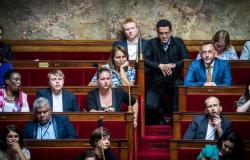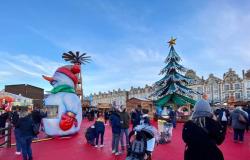How can we know if behind such a worn-out old man there is not hidden a robust eminence grise and if this weakness is not in reality more formidable than the vigor of such another rival built on strength?
According to Olivier Hamant, observing living things teaches us that plants are masters of adaptation. Their growth follows precise patterns, not determined, but modulated in response to the constraints they encounter. Plants grow by integrating the pressures of their environment, whether gravity, light or mechanical constraints, to better draw on their internal resources.
The robustness of an ecosystem lies in its diversity and its resilience to integrate disturbances. Biological systems are interdependent: each element, no matter how fragile it seems, contributes to the overall balance. It is the variety of organisms, life forms and relationships that makes the whole capable of resisting change.
Humanity can draw inspiration from this dynamic diversity to create adaptive and flexible learning environments. Robustness, far from being simple resistance to change, is the capacity for transformation. Some organisms, such as lichens, survive in extreme environments by changing their structure and metabolism. Humans, too, develop resilient lifestyles by cultivating an ability to face challenges collectively, transforming constraints into opportunities.
Robust learning processes, like nature, are based on challenges that push us to reinvent ourselves. Far from passive learning, challenge pedagogy promotes active learning, anchored in reality. It uses methods that confront the learner with complex situations, forcing them to mobilize and develop their inner resources, to cooperate with their peers and to integrate uncertainty as a driver of innovation.
Robustness as an adaptive dynamic: beyond resilience
Robustness, in the sense that Olivier Hamant understands it, is revealed in the capacity of plants and living organisms to absorb changes and to grow by integrating their constraints. Rather than simply resisting, they transform their environment, much like a human group strengthens itself through cooperation, transforming each challenge into an opportunity for growth.
The characteristics of a robust form or method of learning flow from this idea. Robust learning is immersive and interactive, not limited to theoretical knowledge but stimulating creativity through role-playing. Challenge pedagogy, for example, introduces the learner to confronting real obstacles, and invites cooperative solutions. This method is not only aimed at academic mastery, but aims to develop skills such as emotional resilience, critical thinking and mental flexibility, essential in an ever-changing world.
Deep ecology and the notion of environment: internal state and external state
Deep ecology maintains that nature and humanity form an inseparable whole, that the well-being of one depends on the respect and understanding of the other. Augustin Berque, in his reflections on the environment, evokes a space where each being, human or not, lives in interdependence.
Berque’s mesological environment is then more than an environment; it is a continuous relationship between the inner state of an individual and the outer state of the world around him. Take the example of plant communities in forests, where trees share nutrients and information via their roots, forming an ecosystem where the individual nourishes the collective. Likewise, deep ecology advocates a vision where every human action should take into account the consequences on the environment, and thereby, on our own internal well-being. This vision opens a space of practice for forms of learning that transcend knowledge to touch on modes of being in the world.
In this context, facilitators become mediators of the human environment. Their role is to promote collective awareness and a commitment to interdependence, allowing individuals to reconnect not only to others, but also to themselves, by integrating an inner dimension of transformation. Through their support, they contribute to building a human ecology that strengthens the robustness of each participant while solidifying the collective fabric.
Human permaculture: an integrated approach to social robustness
Human permaculture transposes these ideas of deep ecology and biological robustness to human relationships, where each individual, each community, becomes a “resource” for others, not to benefit from it but to enrich a global balance.
This model is inspired by the observation of natural ecosystems where the diversity of inputs reinforces the solidity of the system. Like a forest where each tree, each insect and each micro-organism interacts to strengthen the whole, a society which applies the principles of human permaculture values each person as an active resource, capable of offering and receive contributions rich in diversity.
This concept goes beyond simple utilitarian exchanges to build a form of gift-for-gift, inspired by Marcel Mauss, where each member of the collective makes a contribution which will, in return, be received and valued by the others.
The role of facilitators in a robust and interdependent system
Facilitators occupy a central place in this dynamic. They don’t just manage a group; they cultivate a human ecology by facilitating meaningful interactions and supporting the authenticity of each participant.
Inspired by living adaptation strategies, facilitators encourage groups to reorganize in the face of challenges, adapt their resources and integrate tensions as positive forces. Characteristics of robust facilitation include the ability to welcome conflict, nurture creativity, and foster relationships based on reciprocity and mutual respect. Facilitators, by adopting a deep ecology approach, work to transform each human interaction into a learning opportunity, where the inner state of each participant enriches the outer state of the collective. This approach makes it possible to build groups where links are flexible enough to integrate differences and strong enough to resist pressure.
Synergy between biological and social robustness: towards a living model
Observing living things invites us to rethink our modes of relating by integrating principles of interconnection, diversity and transformation. By combining robustness, human permaculture, the notion of environment and deep ecology, we are developing a pedagogy of complexity, where the capacity to adapt becomes central.
This living model nourishes an inner transformation, where each individual learns to welcome challenges not as obstacles, but as resources to explore and integrate to grow in interaction with others.
Inner transformations, guided by these principles, strengthen our capacity to create human systems where interdependence, diversity and authenticity are sources of robustness. By reappropriating these values, each member of the group contributes to the creation of a sustainable human ecology, open to challenges and ready to evolve in a constantly changing world.
Sources
Berque, A. (2000). Écoumene: Introduction to the study of human environments. Belin.
https://www.decitre.fr/livres/ecoumene-9782701199511.html
Cristol, D. (2022). Pedagogy of challenges: an approach to active learning. Hal
Hamant, O. (2020). The plant in the middle: how plant growth teaches us to transform constraints into resources. South Acts.
Mauss, M. (1950). Essay on the gift: Form and reason for exchange in archaic societies. Presses Universitaires de France. https://www.decitre.fr/livres/ssais-sur-le-don-9782130855842.html
Naess, A. (1973). The shallow and the deep, long‐range ecology movement. A summary. Inquiry, 16(1), 95-100.
Senge, P. M. (1990). The fifth discipline – Leverage of learning organizations
https://www.decitre.fr/livres/la-cinquieme-discipline-9782212559378.html
See more articles by this author






